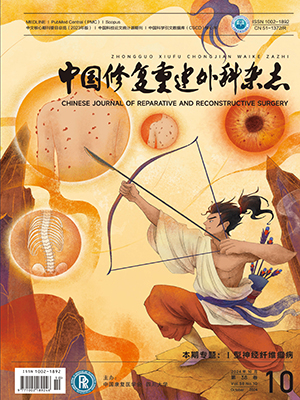OBJECTIVE: To explore the possibility of improving the performance of tissue engineering valve by means of preendothelialization with cultured human umbilical vein endothelial cell(hUVEC) and to develop a new xenogenic bioprosthesis valve material. METHODS: The porcine aortic valves treated by use of glutaraldehyde(GA), epoxychloropropane(EC), L-glutamic acid(L-GA) and cellular extraction(CE) respectively were divided into four groups; group 1(GA), group 2(EC), group 3(EC + L-GA), and group 4(EC + L-GA + CE). The cultured hUVECs were seeded onto the treated porcine aortic valve, then that stuff were examined by means of EC VIII factor staining, living cells counting and microscopy. RESULTS: The cultured hUVEC could adhere to culturing bottle wall an hour later, and propagated to two passages after seven days. The cells increased with serial passage at a 7-day interval. But the hUVEC grew slowly when seeded onto the treated valve material except group 4. The cells in group 4 covered the surface of valve completely seven days later, which could also be seen in group 3 but not completely. There was no cell growing in group 1, and only fewer in group 2. The living cell in groups 3 and 4 were significantly more than in groups 1 and 2 on the 3rd, 7th and 14th days (P lt; 0.01), meanwhile, the number of cells in group 4 were also significantly more than that in group 3 (P lt; 0.05). The covering area of cultured cell on the valve material in groups 3 and 4 was significantly larger than that in groups 1 and 2. The covering area of cell in group 4 was over 95%, and higher than that in group 3(60%-70%). The hUVEC of group 4 arranged in pattern of three dimension. So it could resist rising of foreign power from the cardiac cavity of high pressure and flowing volume. There was no cell on the leaflet surface in group 1, and only a few pinch of cells could be seen in group 2. CONCLUSION: The porcine aortic valve can be used to be an ideal xenogeneic valve scaffold; the scaffold of porcine aortic valve should be treated by use of epoxy-chloropropane, L-glutamic acid and cellular extraction, so that a best growing environment to the hUVEC would be given; the cultured hUVECs used to be source of seed living cell had a boundless prospects; the growing velocity of cultured hUVEC was controllable, which facilitated clinical application; and the endothelial cells of xenogeneic valve material which grew compactly onto the scaffold can resist rising of foreign power from the cardiac cavity itself.
Citation: SHI Kaihu,ZHANG Xi,ZHANG Jingfang.. EXPERIMENTAL STUDY OF XENOGENEIC HEART VALVE MATERIAL. Chinese Journal of Reparative and Reconstructive Surgery, 2003, 17(6): 496-500. doi: Copy




